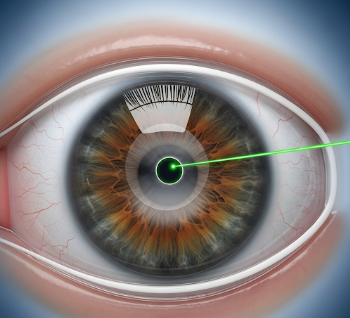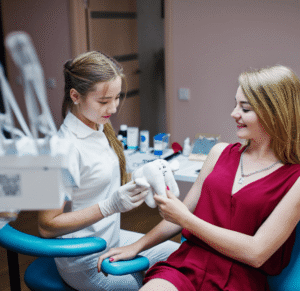Overview
YAG Laser Capsulotomy, also called Posterior Capsulotomy, is a minimally invasive ophthalmic procedure performed to treat posterior capsule opacification (PCO), which can occur months or years after cataract surgery. PCO is often referred to as a “secondary cataract,” and it can cause blurred vision, glare, or decreased visual clarity.
South Korea is recognized for advanced ophthalmology services, cutting-edge laser technology, and experienced ophthalmic surgeons. Patients benefit from quick, painless treatment, rapid recovery, and improved visual outcomes.
YAG Laser Capsulotomy is typically recommended for patients who:
- ➤ Have blurred or cloudy vision following cataract surgery
- ➤ Experience glare, halos, or difficulty reading
- ➤ Require quick, outpatient treatment for posterior capsule opacification
- ➤ Seek minimally invasive procedures with rapid vision restoration
What is YAG Laser Capsulotomy (Posterior Capsulotomy)?
YAG Laser Capsulotomy is a laser-based procedure that creates a small opening in the cloudy posterior capsule of the lens, allowing light to pass through clearly and restoring vision.
Key points:
- Performed using a Nd:YAG laser under topical anesthesia
- Painless, outpatient procedure typically completed in 5–15 minutes
- Does not require incisions or sutures, minimizing recovery time
- Korean hospitals use state-of-the-art laser systems with precision targeting to ensure safety and effectiveness
What are the Benefits?
✔ Rapid improvement in visual clarity and reduction of blurred vision
✔ Minimally invasive, painless, and quick outpatient procedure
✔ No need for additional surgery or sutures
✔ Safe and effective with minimal complications
✔ Korean clinics provide advanced laser technology and skilled ophthalmologists
Additional benefits include:
- ➤ Immediate improvement in reading, driving, and daily activities
- ➤ Reduces glare, halos, and visual disturbances caused by PCO
- ➤ High precision targeting avoids damage to surrounding ocular structures
- ➤ Follow-up care ensures proper monitoring and long-term safety
Procedure Details:
1) How should I prepare for YAG Laser Capsulotomy?
- ● Eye examination: Ophthalmologist evaluates the cataract surgery site and posterior capsule
- ● Pupil dilation: Eye drops used to dilate pupils for optimal laser access
- ● Medical history review: Identify allergies, previous ocular conditions, or medications
- ● Consent: Discuss the procedure, expected outcomes, and potential risks
- ● Korean hospitals: Offer comprehensive pre-procedure assessment, laser planning, and patient education
2) What happens during the procedure YAG Laser Capsulotomy?
- ➤ Anesthesia: Topical anesthetic eye drops applied
- ➤ Procedure steps:
- Patient positioned at the laser microscope
- Ophthalmologist uses Nd:YAG laser to create a small opening in the posterior capsule
- Laser energy precisely targets the opacified area without affecting the intraocular lens
- Vision improvement is usually noticeable within hours to a day
- ➤ Duration: Typically 5–15 minutes
- ➤ Korean advantage: Use of advanced laser systems and experienced ophthalmologists ensures accuracy, safety, and minimal discomfort
3) What happens after YAG Laser Capsulotomy?
- ● Immediate care: Vision may be slightly blurry; eye drops may be prescribed to prevent inflammation
- ● Activity: Most patients can resume normal activities the same day, including work and driving (once vision is comfortable)
- ● Follow-up: Ophthalmologist checks intraocular pressure and ensures proper capsule opening
- ● Side effect management: Mild floaters or light sensitivity may occur temporarily
- ● Korean hospitals: Provide structured post-procedure monitoring and guidance for optimal visual outcomes
Risks / Benefits
✔ Benefits:
- ✦ Rapid restoration of clear vision
- ✦ Minimally invasive, outpatient, and painless
- ✦ No surgical incisions or sutures required
- ✦ High precision reduces the risk of complications
⚠ Possible Risks (rare):
- ➔ Temporary floaters or small particles in vision
- ➔ Mild increase in intraocular pressure
- ➔ Eye inflammation or swelling
- ➔ Rare retinal detachment or macular edema
- ➔ Rare need for repeat capsulotomy if opacification recurs
Recovery and Outlook
- ➤ Immediate recovery: Vision may improve within hours; minor floaters may appear
- ➤ Activity: Normal activities can be resumed almost immediately; avoid eye rubbing
- ➤ Long-term outcome: Most patients achieve significant and lasting improvement in visual clarity
- ➤ Korean advantage: Hospitals provide post-procedure eye checks, IOP monitoring, and long-term visual care
When To Call the Doctor
Contact your ophthalmologist if you notice:
- ⚠ Sudden decrease in vision or flashes of light
- ⚠ Severe eye pain or redness
- ⚠ Persistent floaters affecting daily activities
- ⚠ Unusual discharge or swelling
- ⚠ Signs of infection or unexpected visual changes
Best Korea Option / Process
South Korea is a leader in ophthalmology and laser eye procedures, including YAG Laser Capsulotomy, due to:
- 🌟 Highly experienced ophthalmologists with advanced laser training
- 🌟 State-of-the-art Nd:YAG laser technology
- 🌟 Minimally invasive procedures with rapid recovery
- 🌟 Comprehensive post-procedure care including IOP checks and visual monitoring
- 🌟 Multilingual support for international patients seeking high-quality eye care
Top Korean Hospitals for YAG Laser Capsulotomy:
- ✅ Seoul National University Hospital (Ophthalmology Dept.)
- ✅ Asan Medical Center
- ✅ Samsung Medical Center
- ✅ Severance Hospital (Yonsei University)
- ✅ Bundang CHA Hospital
✅ Quick Highlights Recap
- ➤ Laser procedure to treat posterior capsule opacification after cataract surgery
- ➤ Rapid, painless, outpatient treatment with minimal recovery time
- ➤ Immediate improvement in vision and reduction of glare or halos
- ➤ Rare complications; manageable with expert care
- ➤ Korean hospitals provide advanced laser systems, expert ophthalmologists, and structured post-procedure care













